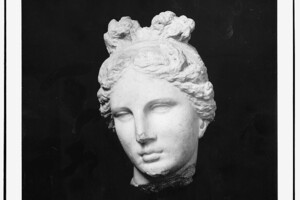As can often be seen on excavated statues, the head is missing. The archeologist noted that the find is roughly the size of a human.

Heads like Aphrodite, goddess of love , and Dionysus, the god of wine, are important finds, as they confirm that the polytheistic culture of ancient Greece existed for a long time, without losing its importance in the Roman era. The excavation coordinator Gohan Koskun says about the importance of the discovery, Greek Reporter reports. An archeologist from Dumlupinar University clarified that the heads were found during recent excavations in the bed of a stream in the ancient city of Aizanoi.
Read also: What Pygmalion is silent about
The finds indicate that there could have been a sculptural workshop in the region. Aizanoi, which has a five-thousand-year history, is located 50 kilometers from the center of the city of Kutahya, which in 2012 was included in the Tentative List of UNESCO World Heritage Sites.
As is often seen on statues excavated in Turkey, the head of the statue is missing. Koskun, who works at Dumlupınar University in central Turkey, said: “Unfortunately, [the head] has not survived to this day, but in its current form we can see that this statue is approximately human.”
< /p>
Read also: HOW TO FIX A BROKEN CUP, OR WILL THE ISLAND OF APHRODITE BE ONE WHOLE?
Greek gods in the ancient city of Aizanoi< /p>
Aizanoi was an important political and economic center in Roman times; Surviving remains from the period include the well-preserved Temple of Zeus, an unusual combined theater and stadium complex, and the macellum on which Diocletian's price edict is inscribed. In the period of late antiquity, the city declined.
Settlement on this territory is known since the Bronze Age. During the Hellenistic period, the city changed hands between the Kingdom of Pergamum and the Kingdom of Bithynia, before it was bequeathed to Rome by the former in 133 BC. It continued to mint its own coins. Its monumental buildings date from the early empire to the III century.
The Temple of Zeus, located on the hill, was the main shrine of the city. Ceramic finds testify to local settlement from the first half of the 3rd millennium BC.
Read also: Odesa soldiers digging trenches accidentally found ancient amphorae
Aizanoi Theater and Stadium are built next to each other, and this combined complex is considered unique in the ancient world.
Related video
Identified two sets of thermals. The first, between the theater-stadium and the temple, dates back to the second half of the second century and includes a palaestra and marble decoration. The second, in the northeast of the city, was built a century later; the floor mosaics depict a satyr and a maenad. Rebuilt a few centuries later, it served as the bishop's residence.
The ancient Greeks believed that the god Dionysus, as a sign of admiration, gave fragrant apples to the goddess Aphrodite, so every year they offered the most beautiful apples to the gods with a request that these fruits were stored for a long time. Earlier in the article “Eh, an apple”, we author ZN.UA Viktor Khokhlachev noted that there was no way Eve could treat Adam in paradise with delicious apples and argued why.


